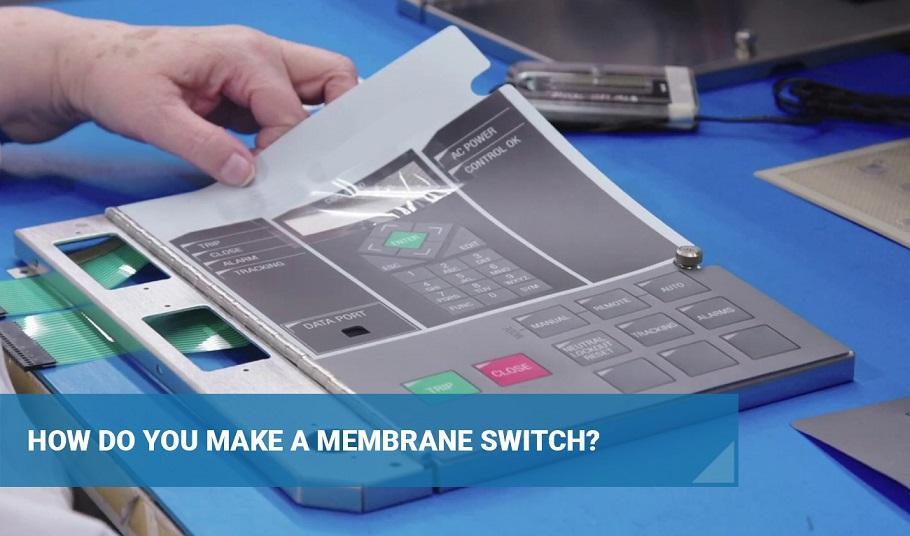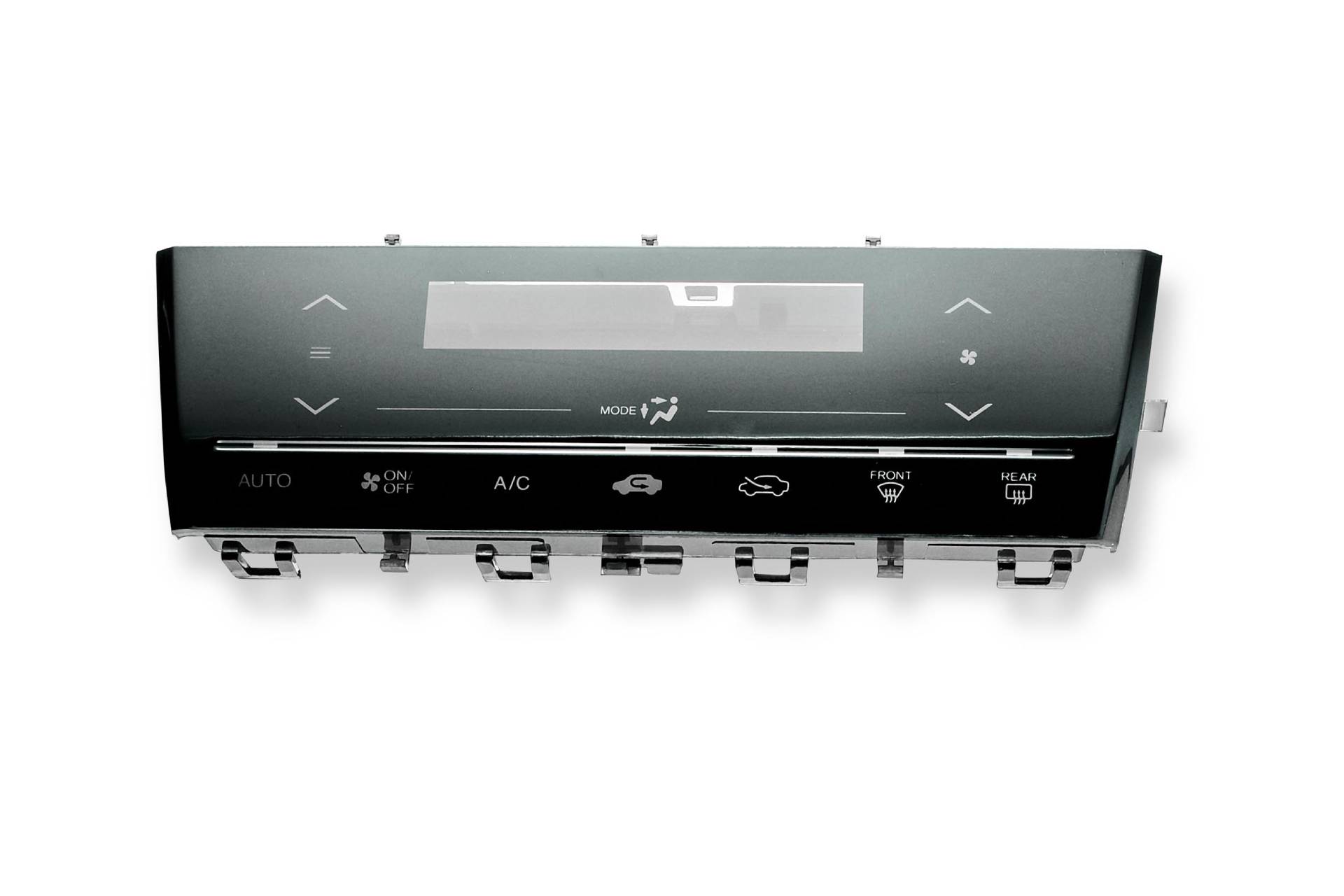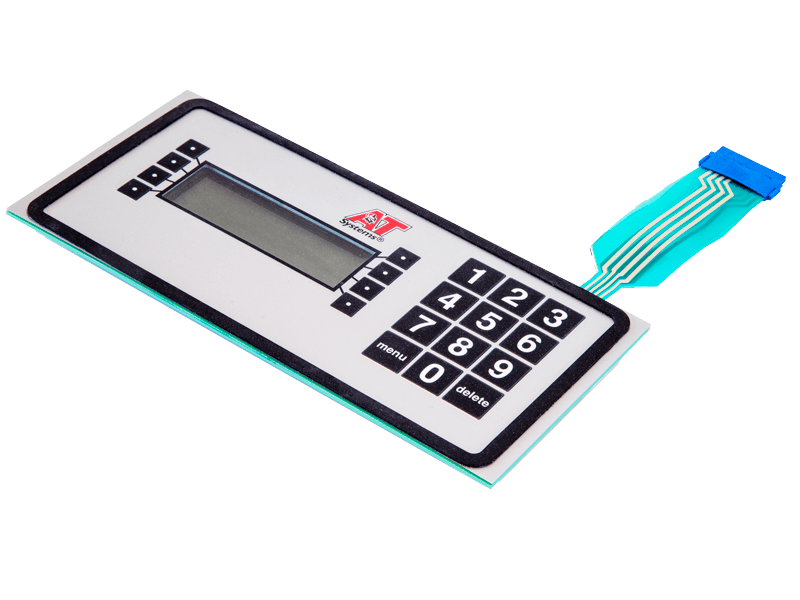Your Go-To Membrane Switch Manufacturer for Industrial Applications
Recognizing the Value of Membrane Switch in Modern Electronics and Their Applications
Membrane changes work as an essential component in modern-day electronic devices, providing an effective interface for individual communication. Their lightweight and customizable nature makes them suitable for a variety of applications across varied sectors. Recognizing their vital components and benefits can offer understandings right into their expanding significance. As technology remains to advance, the development of Membrane changes increases questions concerning their future applications and style technologies. What lies ahead in this vibrant field?

What Are Membrane Buttons?
Membrane buttons are essential parts in contemporary electronic devices, acting as interface that facilitate communication in between users and gadgets. These buttons consist of several layers, including a graphic overlay, a sticky layer, and a circuit layer, all of which interact to develop a long lasting and useful user interface. The layout enables a flat, low-profile remedy that can be customized regarding dimension, shape, and aesthetic look, making them ideal for different applications, from consumer electronics to medical gadgets. The tactile comments given by Membrane switches over improves customer experience, while their resistance to dust and wetness makes them perfect for challenging environments. Furthermore, Membrane buttons can integrate functions such as backlighting and published graphics, even more increasing their use. Their flexibility and toughness make them a recommended option in sectors where reliability and convenience of use are critical, inevitably adding to the seamless operation of modern electronic devices.
Key Elements of Membrane Switches Over
While various elements add to the performance of a membrane layer button, three key layers play significant roles in its layout and operation. The leading layer, generally made from a sturdy polymer, offers as the interface for user interaction, commonly featuring published graphics and symbols. Underneath this is the spacer layer, which preserves the necessary distance between the top layer and the circuit layer. This spacer layer assurances that the button triggers only when pressed, avoiding unexpected inputs. The circuit layer includes conductive traces that complete the electrical circuit when the leading layer is depressed. These traces can be made from numerous materials, including copper or silver. With each other, these elements develop a reputable and durable tool that is portable and versatile, ideal for a wide variety of digital applications, from household appliances to clinical gadgets. Understanding these vital components is important for valuing the total functionality of Membrane switches.
Benefits of Utilizing Membrane Switches

Membrane Switch Manufacturing Refine
Comprehending the Membrane button manufacturing procedure reveals the complex actions associated with producing these crucial parts. The procedure commonly starts with the design stage, where layouts and requirements are created using specialized software program. Following this, the graphic overlay is published on a versatile substrate, commonly utilizing high-resolution printing methods to guarantee clearness and precision.Next, the glue layers are used, which serve to bond the different parts together. The circuit layers, made from conductive inks or materials, are then published onto a separate substratum. These layers are thoroughly aligned and laminated to develop a useful switch.After assembly, the buttons undergo checking to verify capability and durability. Quality assurance procedures are applied throughout the process to determine and rectify any problems. The finished Membrane buttons are packaged and prepared for circulation, prepared to fulfill the needs of modern-day electronic applications.
Applications of Membrane Changes in Various Industries
Membrane switches are progressively utilized across various industries, specifically in clinical equipment and customer electronic devices. In the medical field, they give trustworthy control user interfaces for gadgets that call for specific operation. In customer electronics, these buttons boost customer interaction by offering smooth and responsive user interfaces.
Medical Tools Control
Numerous modern medical tools utilize Membrane switches for structured procedure and boosted customer interaction. These buttons give a reliable, long lasting interface for a selection of applications, consisting of diagnostic equipment, patient surveillance systems, and medical tools. Their customizable designs permit certain designs that can fit the one-of-a-kind demands of health care experts, making sure intuitive navigating and efficient accessibility to essential functions. Furthermore, Membrane switches are immune to contaminants, making them appropriate for sterilized settings. The tactile feedback they supply can boost individual self-confidence, lowering the threat of mistakes during vital medical procedures. In general, the combination of Membrane buttons in medical equipment significantly adds to boosted functional efficiency and patient safety in healthcare setups.
Customer Electronics Interfaces
In the domain name of customer electronic devices, Membrane buttons play a crucial duty in enhancing individual interfaces across a vast array of tools. These switches are important to products such as remote controls, microwaves, and video gaming consoles, offering a straightforward and reliable user interface. Their design enables for a seamless assimilation of graphics and capability, enabling producers to create streamlined, modern-day looks without jeopardizing use. Membrane switches are additionally understood for their resilience, commonly holding up against substantial usage and exposure to numerous ecological problems. In addition, they can integrate functions like backlighting and tactile feedback, further improving the user experience. As customer demands for innovative yet user-friendly interfaces expand, Membrane switches remain to be an important component ahead of time digital tool performance.
Style Considerations for Membrane Switches Over
Creating efficient Membrane changes needs cautious attention to numerous variables that affect both functionality and user experience. One essential factor to consider is the option of products, as they can impact durability, tactile responses, and aesthetic appeal. Picking an appropriate adhesive is necessary for ensuring long-term adhesion and resistance to ecological factors.In addition, the format and style of the switch have to fit user communication, with button sizes and spacing maximized for simplicity of use. The consolidation of graphics and labeling ought to focus on quality and presence under numerous lighting conditions.Consideration of electrical features, such as actuation force and button sensitivity, will certainly improve the responsiveness of the Membrane button. Additionally, the design needs to accommodate making processes to ensure cost-effectiveness and timely production. Generally, a well-balanced style boosts both the customer and the performance experience of Membrane switches in contemporary electronic devices.

Future Fads in Membrane Switch Innovation
As innovation proceeds to evolve, Membrane switches are click resources poised to incorporate brand-new advancements that will enhance their performance and application in different areas. One substantial fad is the incorporation of long lasting and versatile products, which will certainly raise the life-span and reliability of these buttons. Enhanced surface textures and customizable graphics are also anticipated, allowing for more intuitive user interfaces.Moreover, the combination of smart technology, such as touch-sensitive surfaces and haptic feedback, is expected to boost customer communication, making Membrane changes more interesting and receptive. Furthermore, developments in printed electronics will make it possible for extra complicated circuitry within thinner profiles, further increasing style possibilities.Sustainability will also play a vital duty in future advancements, as producers explore click here to read environmentally friendly materials and manufacturing processes. In general, these fads will certainly guarantee that Membrane changes stay appropriate and vital in an interconnected and increasingly electronic world.
Regularly Asked Concerns
How Do Membrane Changes Contrast to Standard Mechanical Switches?
Membrane switches deal advantages over typical mechanical switches, consisting of decreased dimension, lighter weight, and enhanced resilience. They typically supply a sealed surface, boosting resistance to dust and dampness, making them optimal for varied applications.
What Materials Are Generally Used in Membrane Switch Building And Construction?

Can Membrane Switches Withstand Extreme Environmental Issues?
Membrane switches can hold up against extreme ecological conditions, relying on their design and products. Top quality building and constructions frequently include resilience versus temperature level variations, humidity, and exposure to chemicals, making them ideal for various demanding applications throughout industries.
The Length Of Time Do Membrane Switches Over Normally Last Before Failure?
Membrane changes usually show a life expectancy varying from 1 to 10 million actuations, depending on elements such as use frequency, environmental problems, and making high quality. Normal upkeep can expand their sturdiness and functional reliability significantly.
Are Membrane Switches Over Customizable for Particular Applications?
Membrane buttons are undoubtedly personalized for details applications. They can be tailored in capability, dimension, and layout, enabling producers to meet distinct customer demands and improve item read the article aesthetics while maintaining operational efficiency and longevity. Membrane switches are essential components in modern electronics, serving as individual interfaces that promote communication in between users and gadgets. The responsive comments offered by Membrane changes improves customer experience, while their resistance to dirt and wetness makes them optimal for testing atmospheres. The incorporation of graphics and labeling must focus on clarity and presence under different lighting conditions.Consideration of electric attributes, such as actuation force and switch sensitivity, will certainly boost the responsiveness of the Membrane button. Improved surface area appearances and customizable graphics are also prepared for, enabling for even more instinctive user interfaces.Moreover, the assimilation of wise technology, such as touch-sensitive surface areas and haptic comments, is expected to improve user communication, making Membrane switches over extra responsive and engaging. Membrane switches over offer benefits over standard mechanical switches, including minimized size, lighter weight, and improved sturdiness.